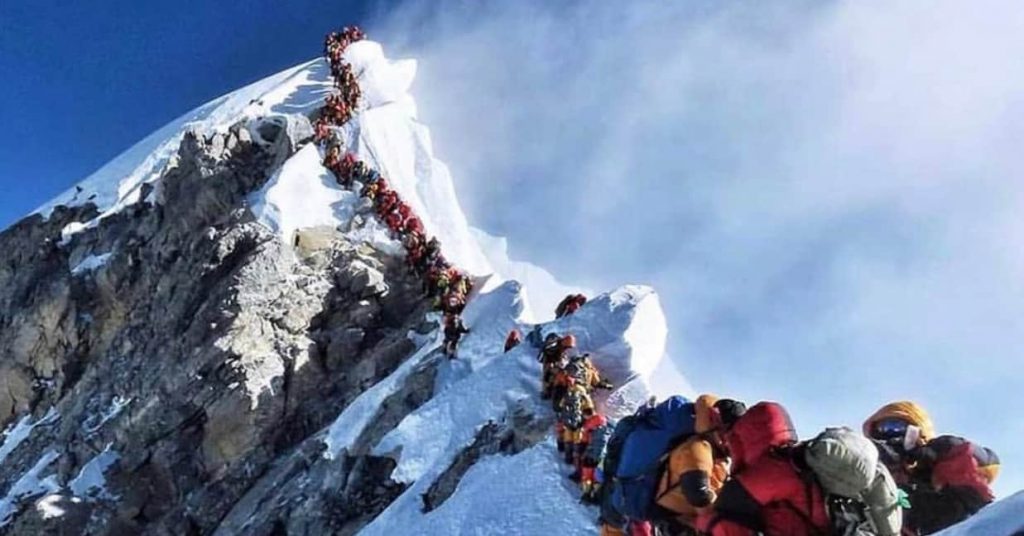Nepal has issued a record 381 permits, costing $11,000 each, for the current spring climbing season causing a traffic jam of climbers on Everest’s “death zone.” Though this was done to bring in the much-needed money for the impoverished Himayalan country, it appears to have done more damage.
A traffic jam of climbers has resulted in a total of eight deaths as hundreds of climbers attempt to achieve the ultimate in mountaineering. These include two Indians and a Nepali on the Nepal side and an Austrian on the way down on the northern Tibetan side, officials and expedition organisers said.
Ang Tsering Sherpa, former president of the Nepal Mountaineering Association, said that the weather window to summit this season was narrow, meaning that many teams had to wait to go up.
“Spending a long time above the death zone increases the risk of frostbite, altitude sickness and even death,” he said. It is important to note that most of the climbers were “stuck in traffic” for approximately 12 hours.
The summit of Mount Everest has an elevation of 8,848 meters (29,029 feet). At that level, each breath contains only one-third of the oxygen found at sea level. The human body is also rapidly deteriorating at that altitude, meaning most people can spend only a matter of minutes at the top, without extra oxygen supplies, before it becomes intolerable.
“The weather has not been very great this climbing season, so when there is a small window when the weather clears up, climbers make the move,” director general of Nepal’s Tourism Department Danduraj Ghimire said, rejecting claims that the deaths were caused by overcrowding. “On May 22, after several days of bad weather, there was a small window of clear weather, when more than 200 mountaineers ascended Everest. The main cause of deaths on Everest has been high altitude sickness which is what happened with most of the climbers who lost their lives this season as well.”
Mountaineering in Nepal has become a lucrative business since Edmund Hillary and Tenzing Norgay made the first ascent of Everest in 1953.
Most Everest hopefuls are escorted by a Nepali guide, meaning more than 750 climbers were expected to tread the same path to the top in the current season. At least 140 others have been granted permits to scale Everest from the northern flank in Tibet, according to expedition operators. This could take the total past last year’s record of 807 people reaching the summit.







